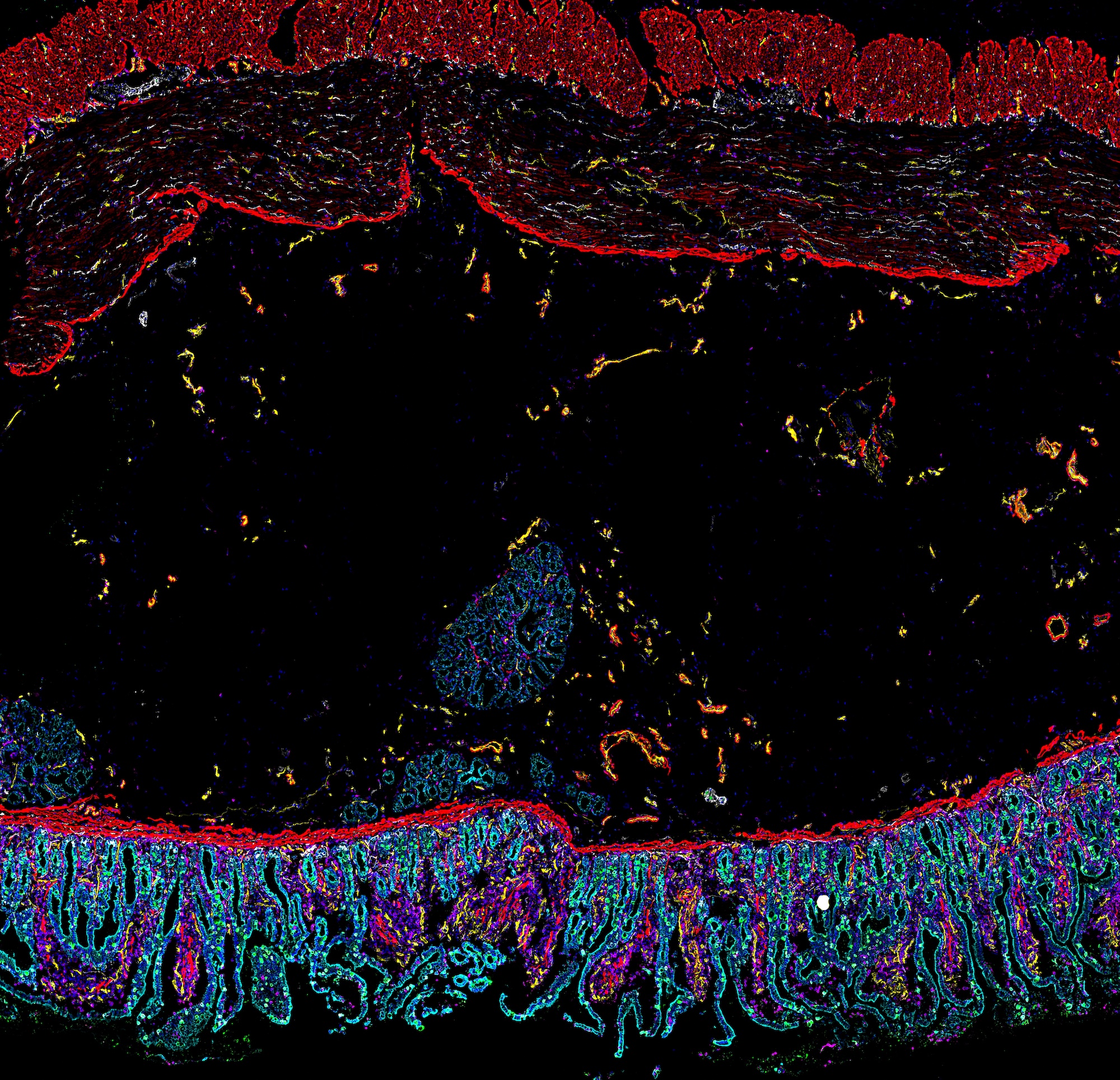To create comprehensive reference maps of all human cells—the fundamental units of life—as a basis for both understanding human health and diagnosing, monitoring, and treating disease.
Gut Biological Network

Additional information about this network, including datasets and any atlases assembled so far, can be found on our Data Portal.
Visit the HCA Data Portal
The intestine is one of the most complex organs in the human body and serves a wide range of functions, including the digestion and absorption of nutrients and a major site of immune interactions. Different anatomical sections of the gut play specific roles in the digestive process, which are performed by different tissue compositions or cell types in each section that communicate with each other in myriad ways. Interactions with trillions of nearby microbes add further complexity.

The Gut Biological Network of the Human Cell Atlas aims to generate a detailed map of the cells forming different regions of the intestine, thereby providing critical information that will allow us to further unravel the complex networks that operate in health. Importantly, understanding the healthy gut provides the starting point for interrogating related diseases such as bowel cancer and inflammatory bowel diseases, which affect an increasing number of patients.
Thus far a number of maps have been released. These include single cell composition maps for different regions of the small intestine and colon in fetal tissue and adults (Elmentaite et al., 2021) as well as composition maps for Inflammatory Bowel Disease and early stages of benign and dysplastic polyps and cancer (Becker et al., 2022). Multiome analysis has revealed the regulatory and expression network for early stage cancer progression. As part of HuBMAP, 2D spatial CODEX maps have been generated across different regions for the adult intestine and integrated with single cell multiome data from the same individuals revealing 1) the heterogeneity of the different regions as well as their cellular neighborhoods and 2) the discovery of new cell types (Hickey et al., 2023). These studies contribute to our better understanding of the human intestine.
Our group recently published A Roadmap for the generation of the first Human Gut Cell Atlas outlining current challenges as well as future plans and opportunities (Zilbauer et al, Nature Reviews Gastroenterology and Hepatology 2023).
Network Coordinators:
- Mike Snyder
- Ramnik Xavier
- Matthias Zilbauer
- Jose Ordovas-Montanes
Coordinator email: